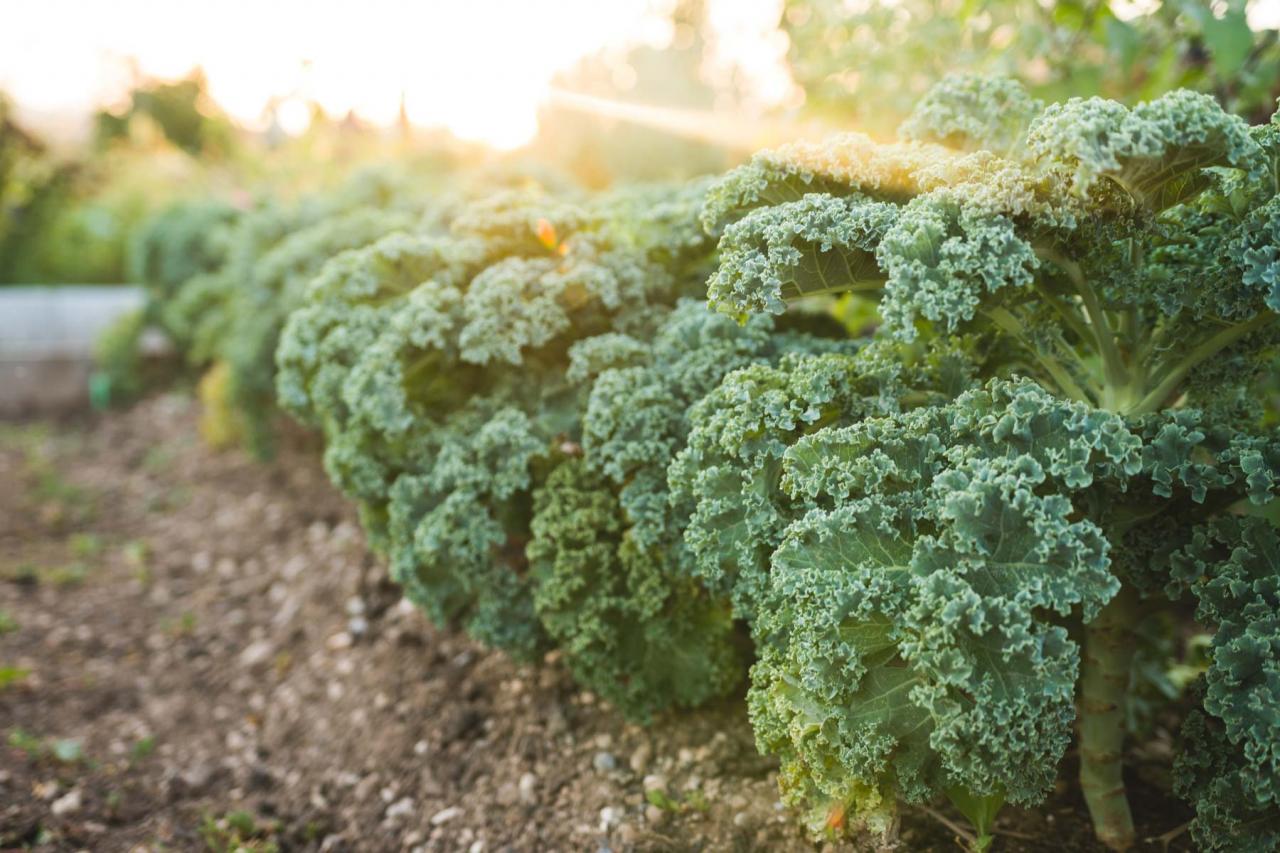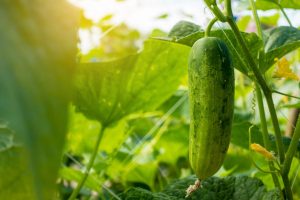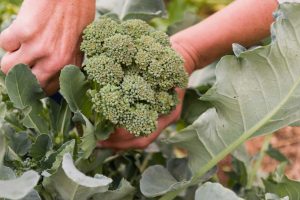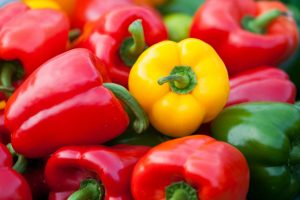

Full-sized kale plants are beautiful with big, frilly leaves that can be eaten whole in sandwiches, cut into salads, used as a garnish, or cooked alone or in soups. Cold-hardy and resilient, kale is an easy member of the cabbage family to grow. You can set out plants quite early in spring as long as you protect the young plants from severe cold winds with a cover. They will grow steadily for months until the weather gets too warm. You’ll get a second chance to plant kale in the fall, when cool weather brings out a wonderfully sweet, nutty flavour that is unique to these cold-natured plants. Fall is the best time for growing kale in areas where winter doesn’t dip below the teens, or in a cold frame farther north, because the leaves are sweeter when they mature in cooler weather. In the kitchen, kale can be steamed, stir-fried, or substituted for spinach in omelets, casseroles, or even quesadillas. It’s a wonderful addition to smoothies, too.
Soil, Planting, and Care
Set out plants in spring 3 to 5 weeks before the last frost; in late summer, you can begin planting kale 6 to 8 weeks before the first frost for fall and winter harvests, and continue planting throughout the fall in zones 8, 9, and 10. Kale grows best in full sun, but will tolerate partial shade as well. Plants that receive fewer than 6 hours of sun daily will not be as stocky or leafy as those that get ample sun, but they will still be plenty edible! Like collards, kale likes fertile soil to grow fast and produce tender leaves. Enrich the soil with compost and fertilizer before setting out the seedlings. Apply fertilizer and lime according to test recommendations. If you forgo the soil test, work nitrogen-rich amendments such as blood meal, cottonseed meal, or composted manure into the ground before planting.
The soil pH should be 6.5 to 6.8 to discourage clubroot disease, although the plants will grow fine in a pH of 6.2 to 6.8 if clubroot is not a problem in your garden. To be sure about your soil pH, test the soil with a do-it-yourself kit, or by using your regional Cooperative Extension office.
Kale is easy to plant. Set plants at the depth at which they are growing in the container. Space them 18 to 24 inches apart. The leaves will grow bigger if given a lot of space, but smaller leaves tend to be the most tender. After planting, water plants well and apply a fertilizer such as Miracle-Gro® Shake ‘N Feed® Tomato, Fruits & Vegetables Plant Food for excellent results.
At this point you may need to be patient, because spring-planted kale may stay small until slightly warmer soil temperatures trigger vigorous growth. Kale planted in late summer or early fall may sulk through spells of hot weather. Then, when conditions improve, the plants will take off, quickly multiplying in size.
Kale likes a nice, even supply of water, about 1 to 1.5 inches per week. You can measure how much water rain has provided by using a rain gauge in the garden. Mulch with compost, finely ground leaves, weed-free hay, straw, pine needles, or finely ground bark to keep the soil cool and moist and to keep down weeds. Mulching will also help keep the leaves free of splashing soil for a clean harvest.
Troubleshooting
Kale often grows as a carefree crop, but there are several insects that like kale as much as people do. Velvety green cabbageworms often can be found chewing holes in kale leaves. The larvae of cabbage white butterflies, cabbageworms are more likely to feed on cabbage, broccoli, and cauliflower than to bother your kale.
colourful black-and-orange harlequin bugs often show up on kale plants that are feeling the stresses of old age. Rather than fight the harlequins, most gardeners pull up and compost old plants if it is mid- to late summer. In late summer, the best way to protect young seedlings from these and other pests (like grasshoppers) is to cover them with row cover or some other lightweight fabric, such as wedding net (tulle). The covers can be removed in mid-fall, when pest populations usually drop dramatically.
Watch for outbreaks of gray-green cabbage aphids, which often gather in clusters within the folds of frilly kale leaves. Treat small problems with insecticidal soap. Pick off and discard badly infested leaves.
Harvest and Storage
Like collards, kale leaves are sweetest in the fall, after they’ve been touched by a light frost. Pick the oldest leaves from the lowest section of the plants, discarding those that appear yellowed or ragged. Pick your way up the stalk, taking as many leaves as you like, as long as you leave at least 4 leaves intact at each plant’s top (or growing crown). Kale will produce new leaves all winter in zones 7 to 10. In climates where hard freezes are frequent, kale often survives winter with additional cold protection from thick mulch, row covers, or plastic tunnels. Overwintered plants will eventually bolt (producing yellow flowers) in spring, signaling that it’s time to remove them and make room for other crops. Wash the leaves thoroughly and store them in a plastic bag. You can eat the stems or discard them—it’s up to you. If you cook the kale, the stems will become more tender. Kale leaves will keep for several days in the fridge in a loose plastic produce bag.



